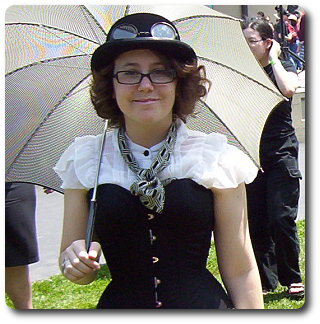Books: Mark Z. Danielewski – House of Leaves
House of Leaves by Mark Z. Danielewski is the sort of book that people tend to either hate or love. The text is infuriatingly complicated, even though its message and storyline are quite simple. Major reviews of the book swing from commentary on Danielewski’s genius to criticism regarding the convoluted nature of the typography.
The main reason for this is its strange narrative style. It flips between two stories by means of footnotes; that of Johnny Truant, an aptly-named disjointed youth who works at a tattoo parlor in Hollywood, and the story of a Pulitzer-prize winning photographer named Navidson. They are connected by a mysterious man called Zampano, a character who is, for the entirety of the novel, dead.
. . .
Their stories begin when Johnny searches the recently deceased Zampano’s apartment, and finds pages and pages of a scholarly analysis of a movie called The Navidson Record. Truant, being an obsessive sort, begins to organize and edit Zampano’s work. This creates two problems for Johnny. Firstly, he begins to hallucinate and has severe problems sleeping. Secondly, as he searches deeper into the background of Zampano, he discovers that the film never existed, and becomes more entrenched in the mystery that has already begun to take over his life.
 Navidson’s story, however, is the part of this post-modernist horror novel that catches most readers. It begins as he and his family move into a house in Virginia. Navidson soon comes to learn something strange about this house: it is larger on the inside than it is on the outside. The suspense that follows is relentless as Navidson and a band of hired explorers set out to explore and document the house, and quickly realize that there seems to be more than extra closet space lurking in its depths. Here is where we see the psychological anguish the inhabitants face as the house forces them to confront their worst nightmares, ultimately changing anyone who dares to brave it.
Navidson’s story, however, is the part of this post-modernist horror novel that catches most readers. It begins as he and his family move into a house in Virginia. Navidson soon comes to learn something strange about this house: it is larger on the inside than it is on the outside. The suspense that follows is relentless as Navidson and a band of hired explorers set out to explore and document the house, and quickly realize that there seems to be more than extra closet space lurking in its depths. Here is where we see the psychological anguish the inhabitants face as the house forces them to confront their worst nightmares, ultimately changing anyone who dares to brave it.
Another thing that makes House of Leaves so different from any other book on the shelf is its typography. For example, throughout the novel, the word “house” is written in blue. But this is the least of the oddities within its covers. In some sections, only one word appears on each page, forcing the reader to flip through faster and faster, rushing to figure out what happens next. Occasionally, the text forms architecturally styled blocks, creating a feeling of claustrophobia. For the most part, this enhances the experience of reading the novel, as it accents the portion of the text that it accompanies.
One quick warning before I finish this up: if you have a history of mental instability, this might not be the best read for you. I know that it threw me off for a few days, and I claim no relevant medical circumstances as an excuse. With that, I consider House of Leaves to be one of my favorite books ever written, and recommend it to anyone in a strong psychological state.
About the Reviewer:
Lady Almira Inchcombe is presently serving on the all-female crew of the H.M.S. Chronabelle, an airship docked in the San Francisco Bay Area. She is acting Weapons Specialist, Event Planner, and Book Enthusiast. A couple of years ago, she became interested in this strange thing called ‘steampunk’ and the rest is history. In her spare time, she goes by the pseudonym of Tessa, and masquerades as a student.
